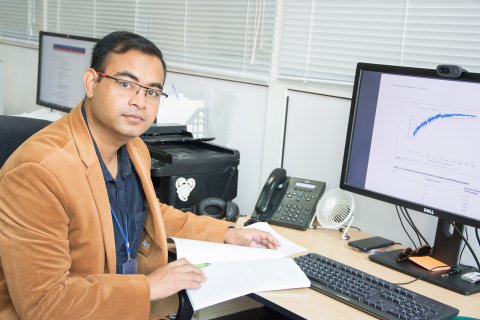EECS scientists developed an algorithm for Twitter that will reveal the satisfaction of air passengers
Competition between airlines stimulates them to discover ways to attract customers, and the analysis of social networks is one of them. Scientists at the School of Electronic Engineering and Computer Science of the South Ural State University have developed an algorithm for analyzing airline customer posts on Twitter to identify possible reasons why the passenger received positive emotions or felt uncomfortable during the flight.
“Passenger reviews are extremely important for air travel. The easiest and most traditional way is a customer feedback form. But most passengers are not interested in filling out such forms. For passengers, the most convenient way to share their opinions is through social networks, rather than a feedback form. Twitter is one of the most popular platforms in the world. Information from Twitter can be used to develop recommendations to improve the quality of customer service,” says one of the authors, Sachin Kumar, a senior fellow at the SUSU Department of System Programming.
The traveler considers several factors at once before choosing one of the airlines. This may be the cost of air tickets, travel time, number of transfers, the weight of checked baggage, reviews of existing customers, etc. Therefore, air carriers pay close attention to these factors in order to improve the quality of service and customer comfort in flight. Using Twitter as an additional source of information when making decisions will help to significantly improve the quality of services and the number of airline customers.
.jpg)
Using machine learning methods, scientists at South Ural State University analyzed a database of Twitter messages and developed a model for emotion classification in tweets for several popular airlines. The model proposed in the study distinguishes between two categories of emotions: positive and negative.
“Twitter was used as a data source for research. The program, written in Python, downloads tweets and preprocesses them. Tweets were grouped into several categories, and a logical connection was identified between them to find a possible reason for a tweet that conveys negative or positive emotions of a passenger,” explains Mikhail Tsymbler, Head of SUSU Data Mining and Virtualization Department of the School of Electronic Engineering and Computer Science .
The results of the study can be used for further development of commercial applications. Airlines will be able to analyze the experience of their customers and try to improve services to attract more customers and provide more comfortable flights. In addition, the approach described in the article can be applied to increase customer satisfaction in other service areas. An indispensable condition is only the availability of official Twitter accounts.

